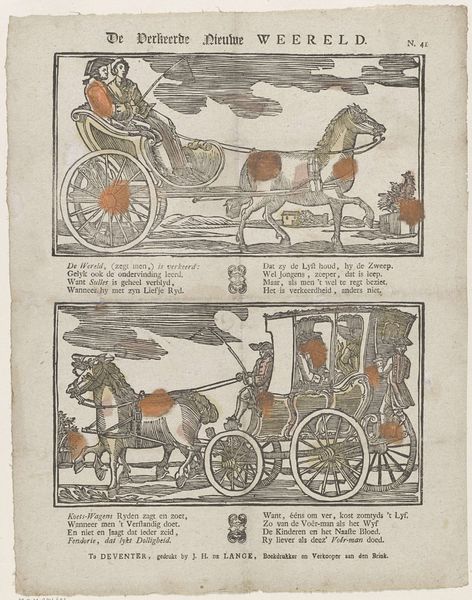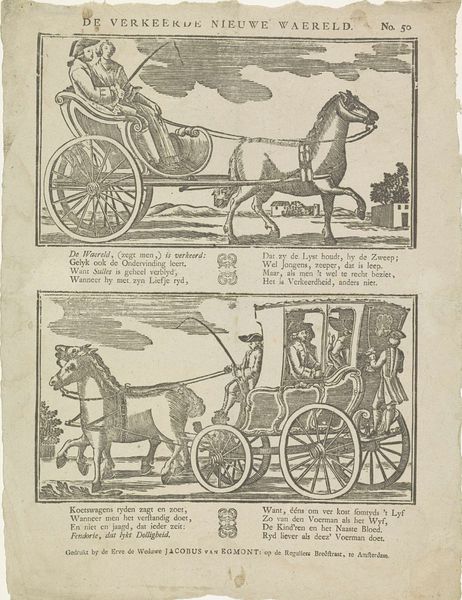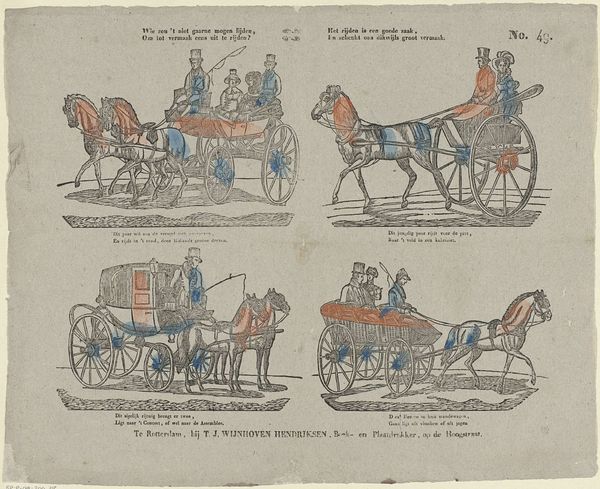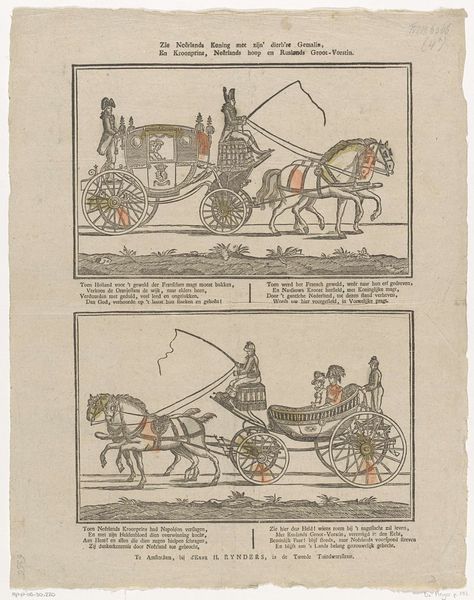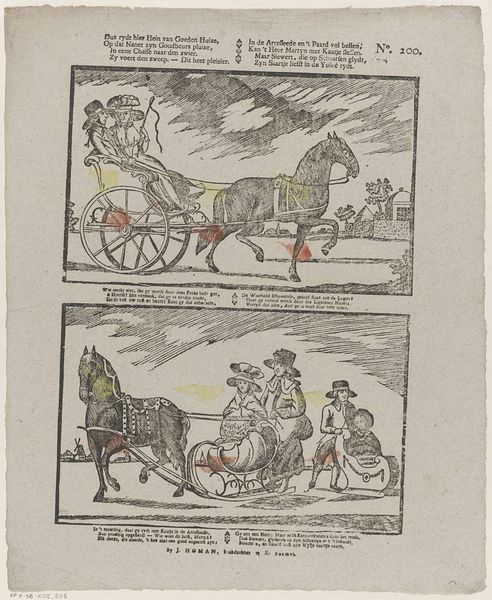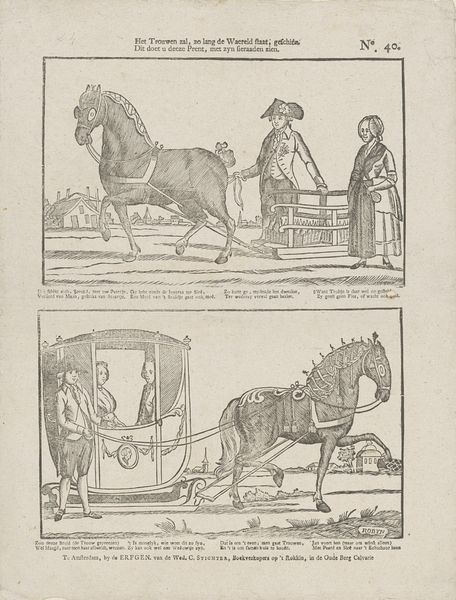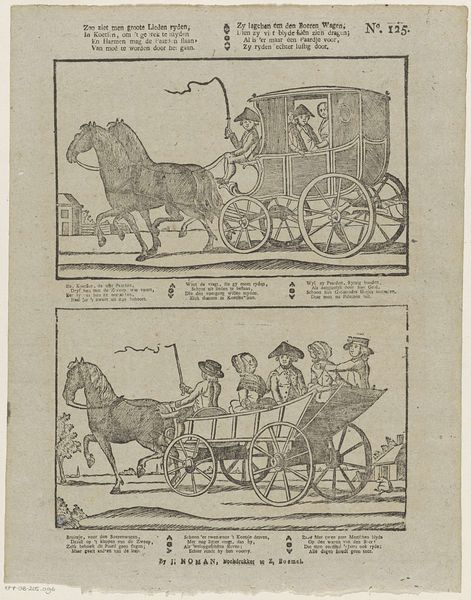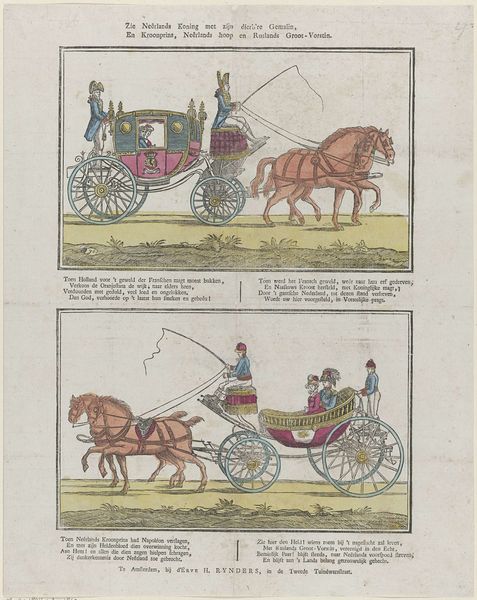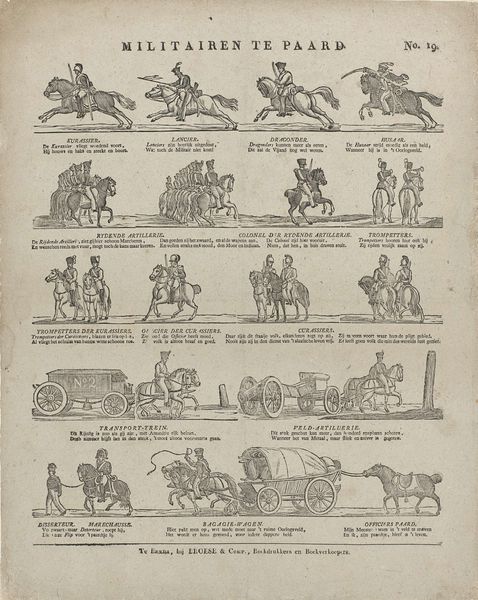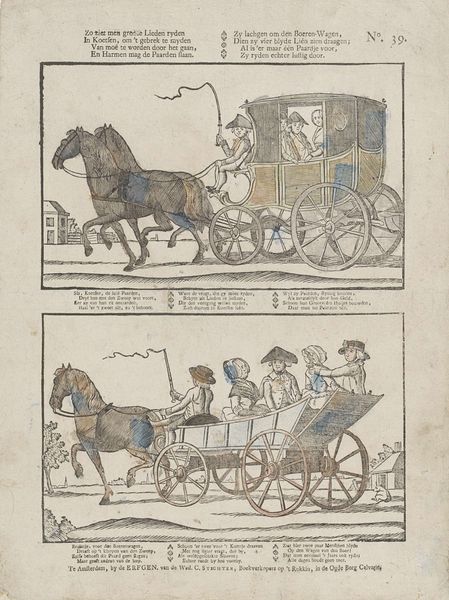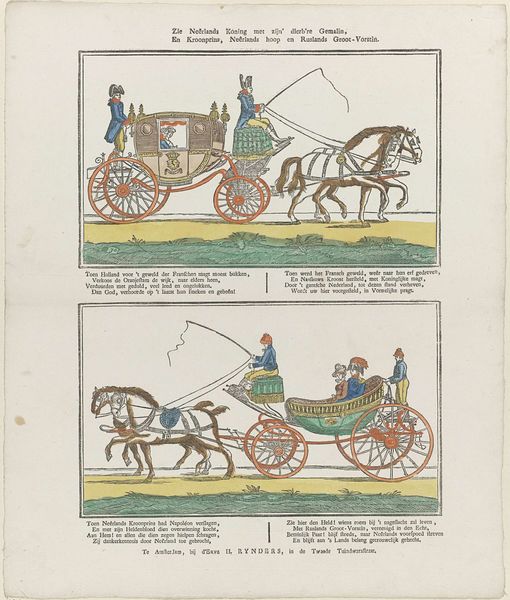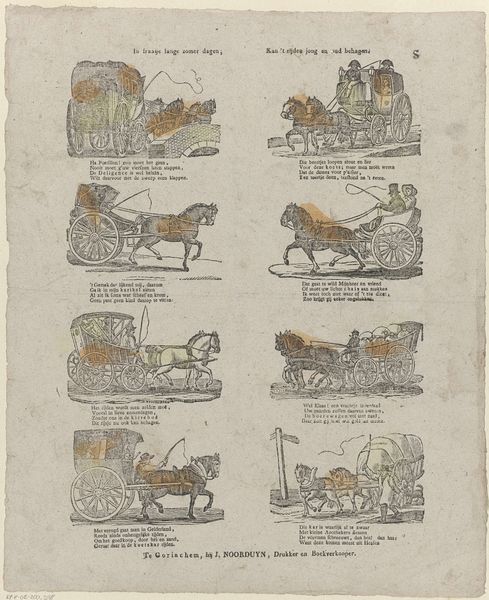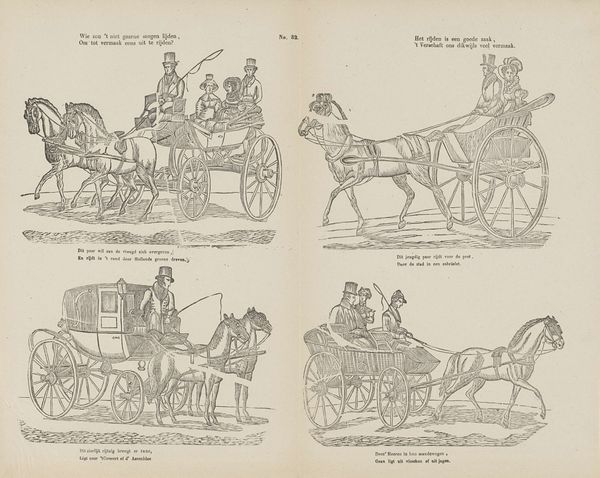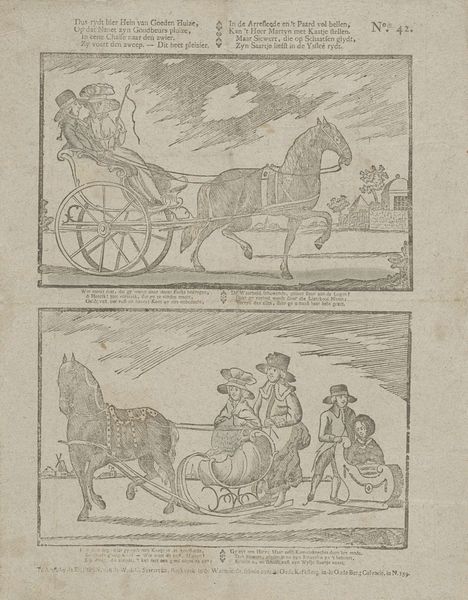
print, engraving
# print
#
old engraving style
#
traditional media
#
cityscape
#
genre-painting
#
history-painting
#
engraving
Dimensions: height 393 mm, width 320 mm
Copyright: Rijks Museum: Open Domain
Curator: Hermanus van Lubeek's engraving, "Het vermaak des zomers," or "The Joys of Summer," created sometime between 1791 and 1812, offers a glimpse into the past. What strikes you first about it? Editor: The immediate impression is one of quaintness, but with an underlying starkness to its composition. The thin lines and the somewhat crude depiction of the carriages give it an almost childlike quality, belying the serious social commentary that I suspect lies beneath. Curator: Exactly. These seemingly simple depictions of carriages and their occupants are anything but innocent. The verses beneath each image provide crucial context, highlighting themes of social status, economic disparity, and the pitfalls of youthful indulgence. The print becomes a form of moral commentary, cautioning against excesses and premature displays of wealth. Editor: I’m intrigued by the choice of medium – engraving. It lends itself well to this didactic approach. The sharp lines and defined spaces create a sense of order, a visual framework for the message being conveyed. It's a calculated aesthetic. Curator: Indeed. The engraving serves as a medium for propagating specific values and critiquing social behaviors. Consider the representation of women. In the upper image, a fashionably dressed woman is portrayed alongside what appears to be her family. Contrast this with the lower image, where the verses speak of a young maid seduced. What narrative do these opposing images of womanhood promote? Editor: It certainly adds another layer of complexity. The contrast is striking—the extravagance of the wealthy family juxtaposed with the possible “sins” or misfortunes of the maidservant. There's a definite emphasis on class distinction created by formal components. Curator: This work, currently held at the Rijksmuseum, resonates because it's more than just a snapshot of a bygone era. It holds a mirror up to the values, anxieties, and power structures that were prevalent in Dutch society at the time. The composition almost becomes a framework upon which social ideals are debated. Editor: Looking closely, the level of detail achieved with just lines and hatching is really quite masterful. There is sophistication and nuance beneath the veneer of naivety. Understanding the message the engraving aims to convey enhances the piece, it's fascinating to consider how technique amplifies concept here. Curator: Ultimately, “The Joys of Summer” isn’t merely a charming depiction of carriages. It's a nuanced social critique delivered through visual narrative. Editor: It leaves you with questions, urging a deeper analysis. Definitely not the quaint snapshot I first perceived it to be.
Comments
No comments
Be the first to comment and join the conversation on the ultimate creative platform.
